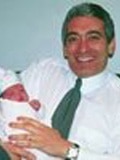
Virginia Center for Reproductive Medicine
11150 Sunset Hills Rd
100
Reston, VA 20190

Age and Fertility -" What Every Woman Should Know
By Fady I. Sharara, MD, FACOG
Virginia Center for Reproductive Medicine
More Women's Health & Beauty Articles
Age and Fertility -" What Every Woman Should Know
While men create sperm throughout their adult lives, women are born with a finite number of eggs, approximately 1- 2 million. In the average girl, all but 400,000 of those eggs will have disappeared by puberty, and throughout adult life approximately 1,000 eggs are lost each month. During a woman's reproductive life, only about 450 eggs ovulate; the rest having been lost. Unfortunately, what most women do not know is that this loss of eggs varies from woman to woman; some will lose eggs at a much faster rate than others.
Chronological Age
Women are most fertile during their late teens and 20s, and for most women, getting pregnant becomes somewhat more difficult by their mid-30s, mainly because the number and quality of eggs decreases as women age. Studies have shown that by age 37, eggs decrease in quality and numbers more quickly, and becoming pregnant becomes more difficult. By the time women reach the age of 43 or 44 their chances of becoming pregnant are drastically reduced, about 1-2% even with the most aggressive therapy (most older women will require a donor egg to achieve pregnancy). It is also true that over time the quality of eggs that are left in the ovaries becomes compromised. This means that the risk of having a miscarriage or a baby with birth defects increases significantly after the age of 35, and especially after 40.
Ovarian age
Ovarian age is even more important than chronological age in fertility. Ovarian reserve tests can determine both the quality and number of viable eggs in the ovaries. Various factors can negatively affect a womans ovarian reserve including smoking, drug use, ovarian surgery, and family history of early menopause. The most common test for ovarian age is the FSH (follicle stimulating hormone) level, drawn on the third day of the menstrual cycle. FSH is the hormone produced in the brain that causes the ovaries to stimulate the growth of follicles, which contain eggs. The higher the FSH level, the harder your brain is working to “wake up” your ovaries. In a sense, the level of FSH on day three of your menstrual cycle indicates the health of your ovaries.
Ultrasound Examination
The use of the ovarian volume and number of antral follicles as markers of ovarian reserve is even better than the FSH level. This ultrasound examination, done on the third day of the cycle, measures each ovary and the number of antral follicles (small follicles in each ovary that are two to ten millimeters in diameter). Decreasing ovarian volume and antral follicle count (AFC) is a normal process of aging, but the ovarian volumes become smaller and AFC becomes lower before the FSH becomes high. Women with small ovaries (less than 3 cc), and fewer than five follicles per ovary, have a greater chance of failed treatment cycles. This test is especially useful when women have no immediate plans to conceive but are thinking about getting pregnant later. A compromised ovarian volume and AFC should result in a change of priorities.
Other Articles You May Find of Interest...
- Sustainable Solutions for Incontinence with Eco-Friendly Product Elitone
- Made In The USA Surrogacy Agency
- Empowering Women Through Orthopedic Health
- Vaginal Discharge: Understanding Normalcy, Concerns, and Care
- Add Some Spring To Your Weight Loss Efforts With Hormone Replacement Therapy
- What Is Your Health Legacy Others Witness That You May Leave Behind
- Surrogacy: A Journey Through Time and Across Cultures

















